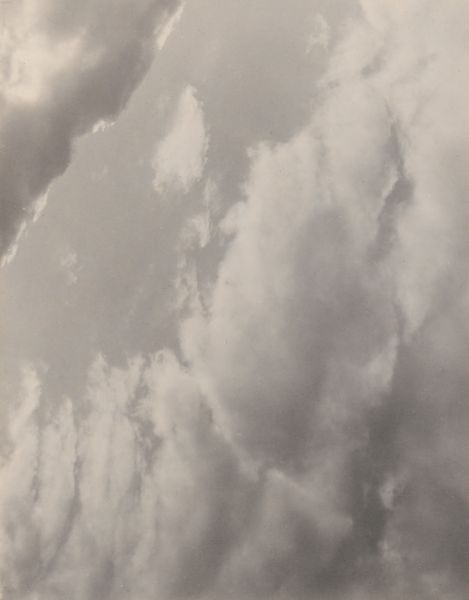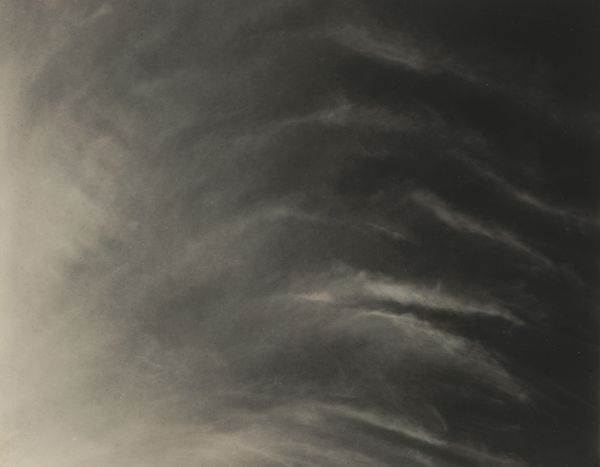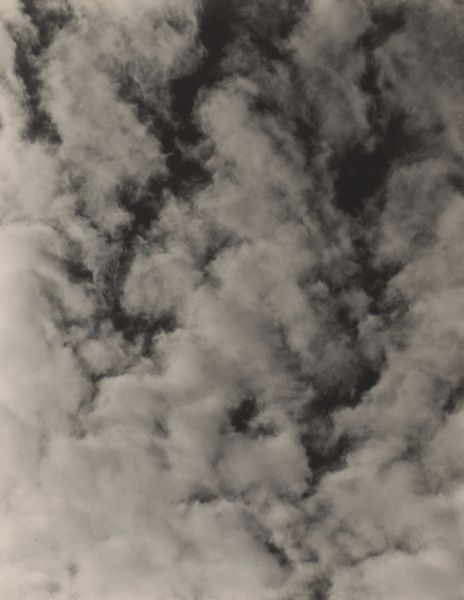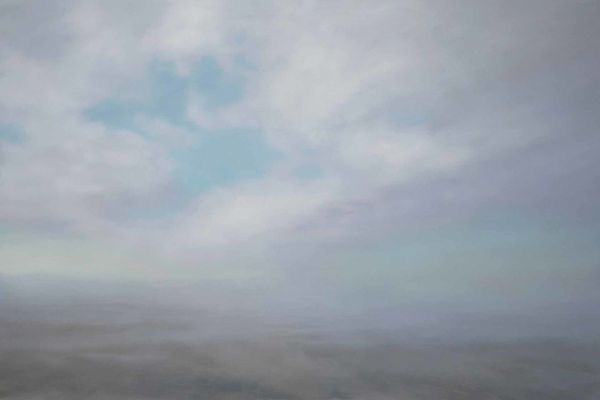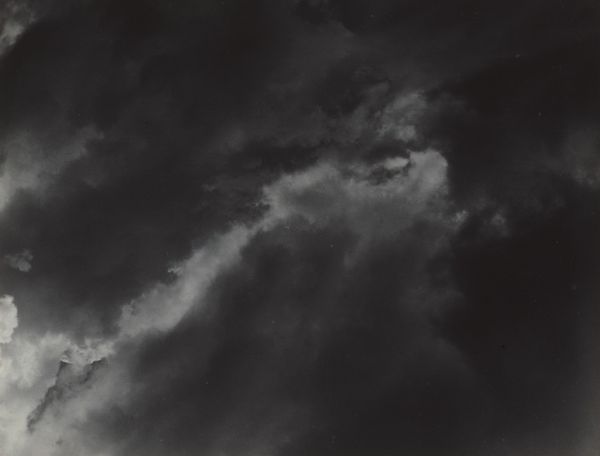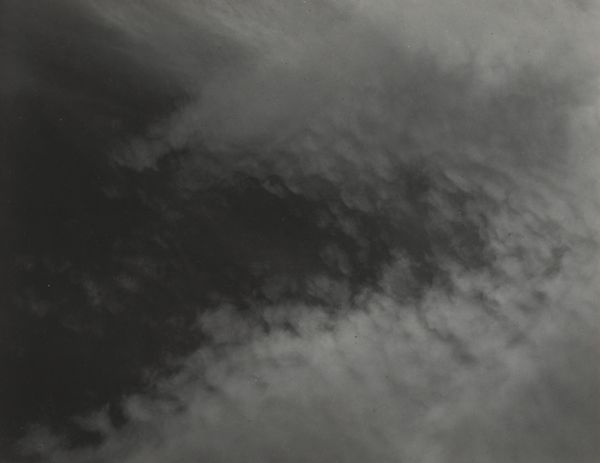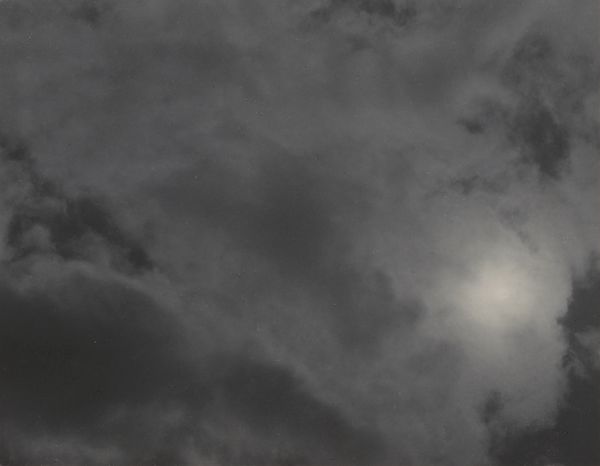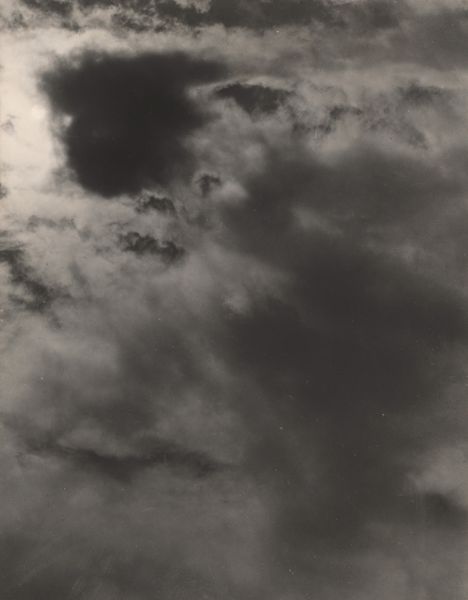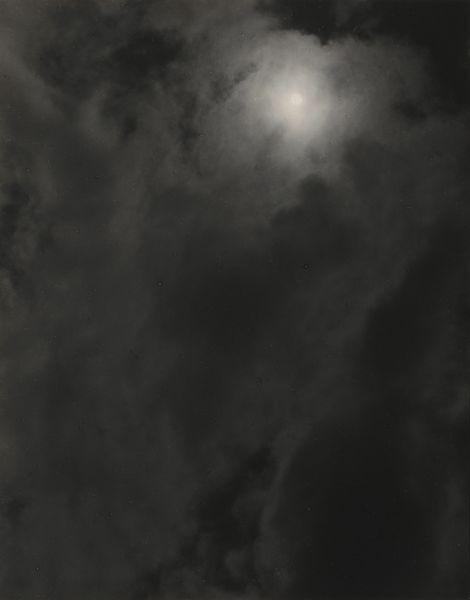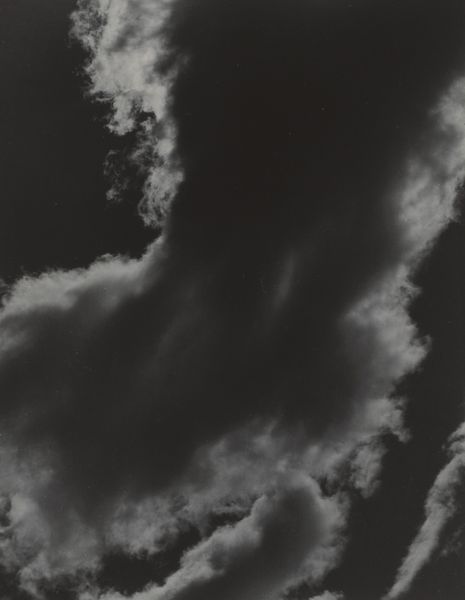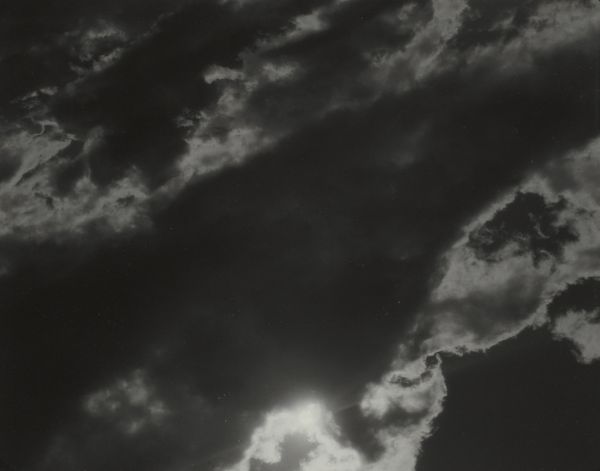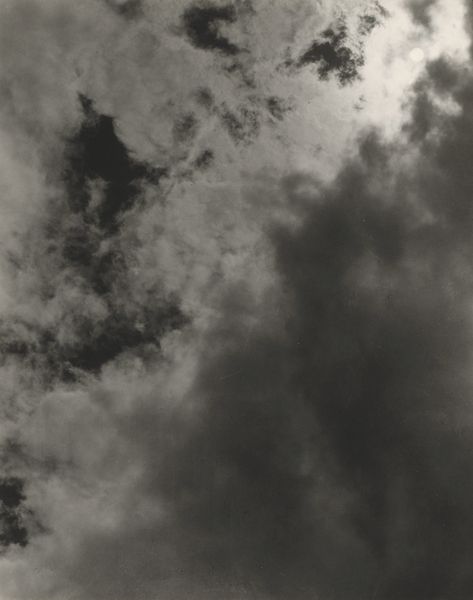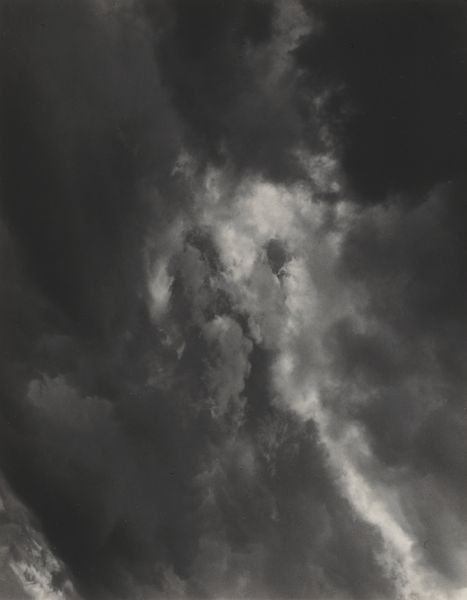
#
capitalist-realism
Copyright: Modern Artists: Artvee
Curator: Here we have Gerhard Richter's "Study for Clouds," painted in 1970. It's quite compelling, wouldn't you agree? Editor: I'm immediately struck by the somber, almost melancholic atmosphere. The muted blues and greys blend to create a sense of a heavy, oppressive sky. Curator: Richter, particularly during this period, engaged heavily with questions of identity and representation in post-war Germany. The skies in his works at this time could be interpreted as a reflection of the internal and collective turmoil that characterized the era. Do you see that echoed here? Editor: Perhaps. Though I am more intrigued by the pure formalism. The cloud formations are rendered with incredible softness, using gradations of color and tone to evoke form, a delicate balance that teeters on the edge of abstraction. Semiotically speaking, there is almost a deconstruction happening within the naturalistic representation. Curator: The suggestion of deconstruction speaks, I think, to his generation’s crisis of faith in historical narratives. How can we find beauty, peace even, under skies pregnant with that much implicit, political and social upheaval? There is a deliberate ambiguity here, reflective of a broader cultural struggle. Editor: Absolutely, ambiguity reigns. Is that a face emerging within the center cluster of cloud, or is it merely a convergence of pigment and texture? It demands deeper engagement, pushing beyond simple representation towards symbolic interpretation. Curator: This pushes at questions of who has the right to determine beauty after such turmoil. Consider who historically would have had access to the sky depicted through landscape art—a certain wealthy and empowered portion of society. Richter questions all of that through this piece. Editor: The tension between the literal sky and its abstraction invites the viewer to project their own emotional landscape onto it, transcending the specificity of the historical or political, accessing universal sentiments. Curator: An invitation to reclaim landscape, perhaps, or at least reassess the narratives it holds. This encourages viewers to really probe who are the we that this evokes; and on whose behalf, Richter invites us to feel, to contemplate. Editor: A beautiful interpretation! From a purely formal perspective, however, it is also successful in eliciting introspection, regardless of one’s specific background. Curator: Precisely. I appreciate how looking at this painting, like Richter’s overall practice, always opens doors to multiple viewpoints. Editor: Indeed. It leaves us with plenty to ponder, both visually and conceptually.
Comments
No comments
Be the first to comment and join the conversation on the ultimate creative platform.
